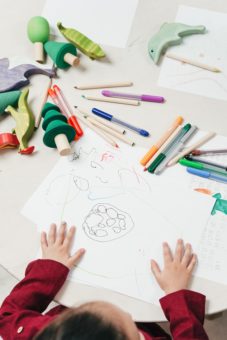As our country and the world grapple with how to adapt education and school in the context of COVID-19, we have an opportunity and an obligation to do things differently—to not allow marginalized students to be an afterthought, but instead to infuse equitable, inclusive strategies from the outset in order to benefit all students. Creating plans for the various scenarios schools may encounter in the fall is a unique challenge, but designing those plans in a way that begins with ensuring access and inclusion for those on the margins, especially students with disabilities, will create a strong foundation on which to rely as the COVID-19 situation continues to evolve. Indeed, this is an opportunity for schools and communities to dig deep, examine their existing practices, and make equity for all a top priority.
 We, along with many other disability advocacy focused organizations and the Educating All Learners Alliance, are working hard to figure out specifics and offer guidance, checklists, and plans. However, one message is clear: the needs of the most at-risk students must be intentionally built into the fabric of re-entry plans from the outset and recognized as a critical component of a healthy school model. As schools and organizations across the country engage in scenario planning and share blueprints and frameworks, ensuring students with disabilities receive robust services is often reduced to an asterisk or afterthought. If schools wait until the last moment to figure out how to provide meaningful access and inclusion for students with disabilities, they will have already failed their most vulnerable students. Relying on retrofitting an entire school model leads to the silos and inequitable outcomes we’ve seen persist in our education system. It does not and will not work to make decisions around staffing, curriculum, budgets, operations, etc. without first analyzing how to make those systems work for marginalized students.
We, along with many other disability advocacy focused organizations and the Educating All Learners Alliance, are working hard to figure out specifics and offer guidance, checklists, and plans. However, one message is clear: the needs of the most at-risk students must be intentionally built into the fabric of re-entry plans from the outset and recognized as a critical component of a healthy school model. As schools and organizations across the country engage in scenario planning and share blueprints and frameworks, ensuring students with disabilities receive robust services is often reduced to an asterisk or afterthought. If schools wait until the last moment to figure out how to provide meaningful access and inclusion for students with disabilities, they will have already failed their most vulnerable students. Relying on retrofitting an entire school model leads to the silos and inequitable outcomes we’ve seen persist in our education system. It does not and will not work to make decisions around staffing, curriculum, budgets, operations, etc. without first analyzing how to make those systems work for marginalized students.
We can ensure a strong educational ecosystem by designing for and prioritizing the needs of students with disabilities and other marginalized students. This approach—which we have advocated for since long before COVID-19—would expand access and equity for all students. Principles that are familiar to those engaged with supporting students with disabilities are now the vehicle through which to reach ALL students. For example:
- Universal design for learning challenges schools and teachers to provide multiple ways for students to access information, such as through written materials, video, or interactive experiences—these access points can be reimagined in the distance learning environment to expand opportunities for all students to engage with learning. Community Roots Charter School in Brooklyn, New York is leveraging UDL to create remote learning opportunities that are equitable and helpful for all families by removing invisible barriers and designing pathways for challenge and affirmation.
- Schools are embracing social-emotional learning as an opportunity to support students in processing their emotions around COVID-19 and to support academic development. This includes strategies like using poetry to reflect on tone and mood and explore feelings of powerlessness and fear. This is a moment to expand and increase opportunities for embedding social-emotional learning into all curriculum and communication.
- The type of thoughtful planning, use of accommodation tools in a virtual classroom, high touch engagement with families, and individual assessment of students’ needs employed by schools like Alliance College-Ready Public Schools is the type of approach that is now needed for all students, not just those with disabilities.
Now more than ever, students’ needs are varied and their ability to navigate traditional school structures is compromised. Therefore, schools must design to the edges—make programs, curriculum, and staff accessible to all, provide supports and differentiation to meet each student where they are, and create a culture of inclusion and equity that ensures that every student is a valued part of the school community. A rising tide for students with disabilities will lift all boats.
Schools must not do what they have always done; they must stretch themselves to find the silver linings, the possibilities, and the potential to leverage this moment of challenge to achieve better access and outcomes for students across all spectrums of income, race, geography, language, and ability. Many schools embraced these concepts prior to COVID-19 and likewise see this moment as both a challenge and opportunity to intensify their commitment to equity, creating incredible results and deep relationships with their students in the process – all schools should look to this model as inspiration for how to reimagine how they educate all students. Designing plans that reach the margins from the beginning will form the columns that will support a strong education house for all.
We have an opportunity to make margins obsolete. We can’t let it pass us by.
Comments are closed.